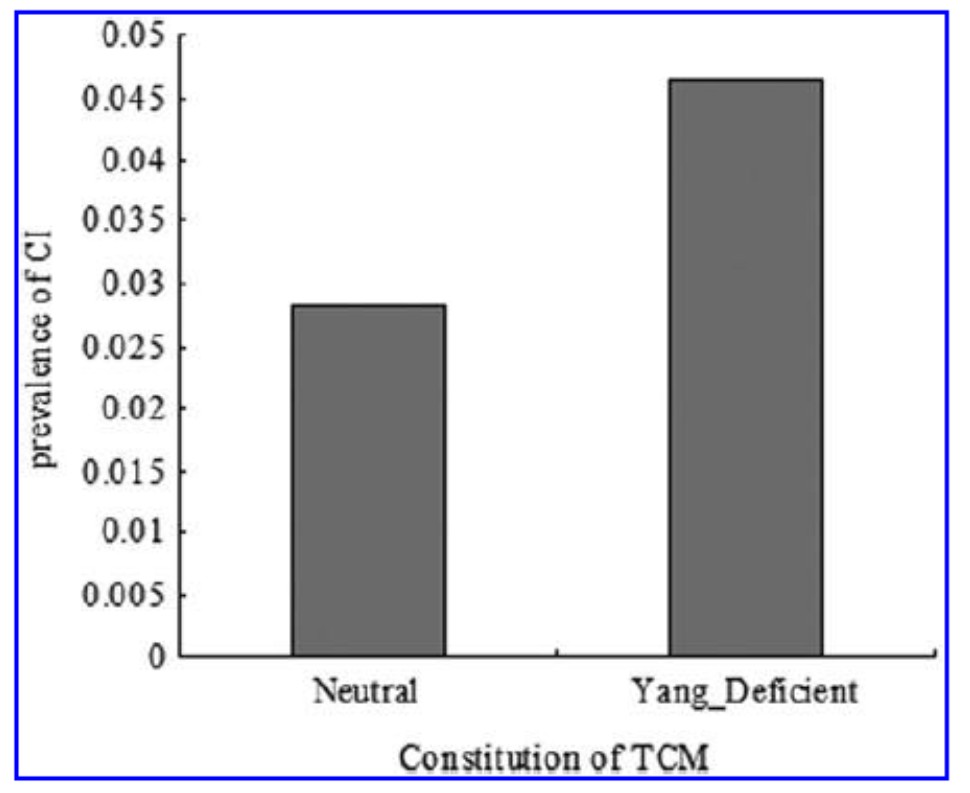The Analysis of Constitutions of Traditional Chinese Medicine in Relation to Cerebral Infarction in a Chinese Sample
Jiaqi Liu, Fei Xu, Nabijan Mohammadtursun, Yubao Lv, Zihui Tang*, and Jingcheng Dong*
THE JOURNAL OF ALTERNATIVE AND COMPLEMENTARY MEDICINE. 2017 Aug 18
Objective: To investigate the relationships between the constitutions of traditional Chinese medicine (TCM) and patients with cerebral infarction (CI) in a Chinese sample.
Methods: A total of 3748 participants with complete data were available for data analysis. All study subjects underwent complete clinical baseline characteristics’ evaluation, including a physical examination and response to a structured, nurse-assisted, self-administrated questionnaire. A population of 2010 neutral participants were used as the control group. Multiple variable regression (MLR) were employed to estimate the relationship between constitutions of TCM and the outcome.
Design: A cross-sectional study was conducted to evaluate the association of body constitution of TCM and CI.
Settings/location: Communications and healthcare centers in Shanghai.
Subjects: A total of 3748 participants with complete data were available for data analysis.
Outcome measures: All study subjects underwent complete clinical baseline characteristics’ evaluation, including a physical examination and response to a structured, nurse-assisted, self-administrated questionnaire. A population of 2010 neutral participants were used as the control group. MLR were employed to estimate the relationship between constitutions of TCM and the outcome.
Result: The prevalence of CI was 2.84% and 4.66% in neutral participants and yang-deficient participants (p = 0.012), respectively. Univariate analysis demonstrated a positive correlation between yang deficiency and CI. After adjustment for relevant potential confounding factors, the MLR detected significant associations between yang deficiency and CI (odds ratio = 1.44, p = 0.093).
Conclusion: A yang-deficient constitution was significantly and independently associated with CI. A higher prevalence of CI was found in yang-deficient participants as compared with neutral participants.



